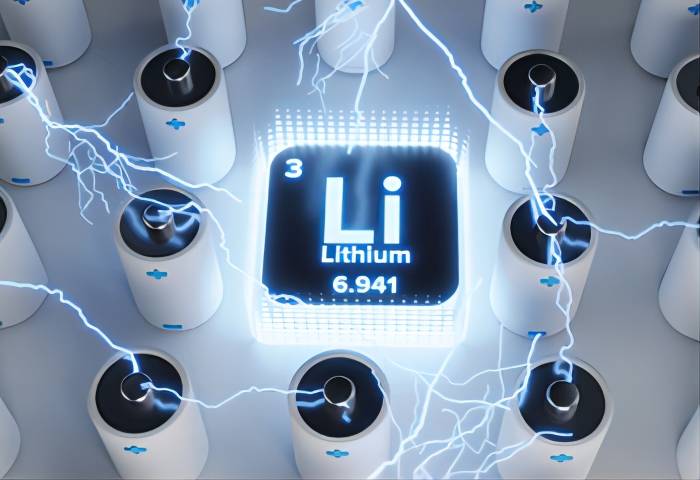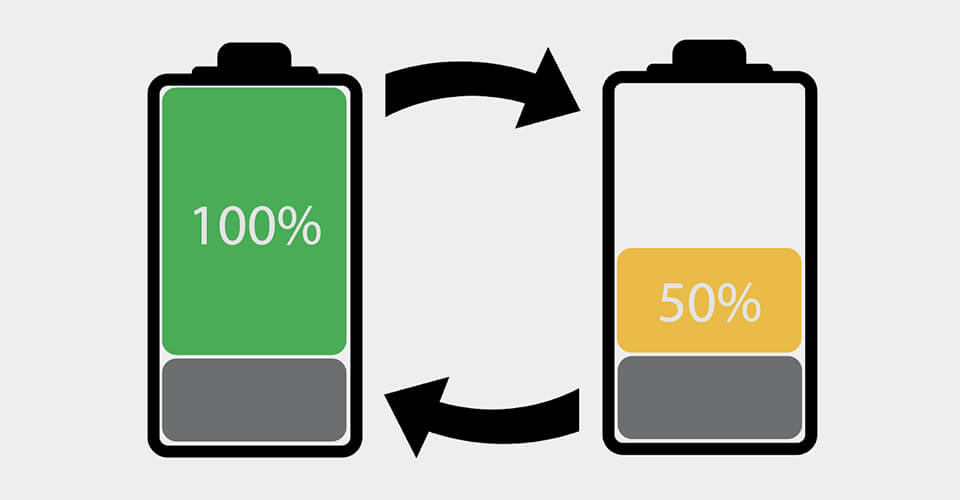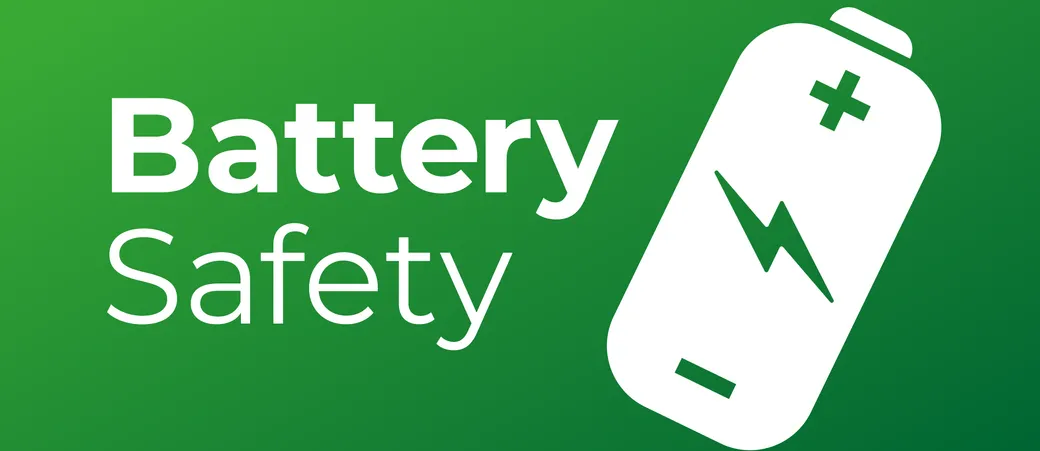The electrolyte of lithium-ion batteries is one of its key components, mainly responsible for conducting lithium ions between the positive and negative electrodes of the battery, thereby achieving the storage and release of electrical energy. The type of electrolyte has a significant impact on the battery's performance, safety, and lifespan. The electrolytes of lithium-ion batteries are mainly divided into two major categories: liquid electrolytes and solid-state electrolytes. Liquid electrolytes are the earliest type of electrolytes used, typically composed of organic solvents (such as carbonate esters) and lithium salts (such as lithium hexafluorophosphate, LiPF6). This type of electrolyte has good ionic conductivity and low viscosity, allowing lithium ions to move freely inside the battery, thereby improving the battery's charging and discharging efficiency. The use of liquid electrolytes makes lithium-ion batteries have high energy density and good cycle performance, but it also brings certain safety risks, such as the possibility of thermal runaway and even explosion in cases of overcharging, over-discharging, or short-circuiting. To improve safety, solid-state electrolytes are being researched and developed. Solid-state electrolytes use solid or gel-state organic conductive films, such as polymer electrolytes or inorganic solid electrolytes, which conduct lithium ions in a solid or semi-solid state, have higher thermal stability and mechanical strength, thereby significantly reducing the safety hazards of the battery. Another advantage of solid-state electrolytes is that they can work over a wider temperature range, improving the battery's environmental adaptability. However, the ionic conductivity of solid-state electrolytes is usually lower than that of liquid electrolytes, which limits their performance in high-rate charging and discharging applications. Nevertheless, solid-state electrolytes have significant advantages in improving battery safety and extending battery life, and they are an important direction for the development of future battery technology.
The type of electrolyte used in lithium polymer batteries is unique, different from the liquid electrolytes of traditional lithium-ion batteries. Lithium polymer batteries use solid or gel-state polymer electrolytes. This type of electrolyte is usually composed of a polymer matrix and lithium salts. The polymer matrix, such as polyethylene glycol or polyvinylidene fluoride, provides the necessary mechanical support and chemical stability, while the lithium salts provide lithium ions to ensure the smooth progress of the battery's electrochemical reactions. The solid or gel-state characteristics of the electrolyte give lithium polymer batteries significant advantages in safety and design flexibility. Solid-state electrolytes not only improve the battery's thermal stability and reduce the risks of overheating and short-circuiting but also allow the battery to be designed in various shapes and sizes to better adapt to different application needs. In addition, solid-state electrolytes also help reduce the weight and volume of the battery, increasing the battery's energy density. However, the ionic conductivity of solid-state electrolytes is usually lower than that of liquid electrolytes, which to some extent limits the battery's charging and discharging rates and cycle performance. To improve the ionic conductivity of solid-state electrolytes, researchers are exploring various methods, such as optimizing the structure of the polymer matrix, introducing conductive fillers, or using new lithium salts. Overall, the type of electrolyte used in lithium polymer batteries not only provides the battery with higher safety and design flexibility but also provides broad space for the future development of battery technology.
The primary difference between lithium-ion batteries and lithium polymer batteries lies in the type of electrolyte used. Lithium-ion batteries typically utilize liquid electrolytes, which are composed of organic solvents and lithium salts (such as lithium hexafluorophosphate, LiPF6). In contrast, lithium polymer batteries employ solid or gel-state polymer electrolytes, such as polyethylene glycol or polyvinylidene fluoride. The liquid electrolyte in lithium-ion batteries offers high ionic conductivity, contributing to their high energy density and good charging and discharging performance. However, this also poses certain safety risks; for instance, there is a possibility of spontaneous combustion or explosion in cases of overcharging or short-circuiting. On the other hand, the use of solid or gel-state electrolytes in lithium polymer batteries significantly enhances safety by reducing the risks of leakage and explosion. Nevertheless, these batteries may experience slightly lower performance during high-rate charging and discharging due to the generally lower ionic conductivity of solid-state electrolytes. Additionally, solid-state electrolytes provide greater design flexibility for lithium polymer batteries, allowing them to be manufactured into various shapes to meet different application requirements. In comparison, lithium-ion batteries with liquid electrolytes face more limitations in terms of shape and size.
The structure of a lithium-ion battery is complex and delicate, composed of multiple key components that ensure the battery can operate safely and efficiently. Its core components include the cathode, anode, separator, and electrolyte. The cathode is typically made up of lithium-containing transition metal oxides, such as LiCoO2 (lithium cobalt oxide), LiMn2O4 (lithium manganese oxide), or LiFePO4 (lithium iron phosphate), which can effectively intercalate and de-intercalate lithium ions during the charge and discharge process. The anode often uses graphite materials, such as natural graphite, artificial graphite, or composite graphite, with a layered structure that provides a stable site for lithium ion intercalation and de-intercalation. The separator is a microporous thin film whose main function is to isolate the cathode and anode to prevent short circuits while allowing lithium ions to pass freely during charging and discharging. The separator is usually made of polypropylene (PP) or polyethylene (PE), and sometimes polyimide (PI) is used to enhance thermal stability. The electrolyte is the ionic transmission medium in the lithium-ion battery; liquid electrolytes are typically composed of organic solvents (such as esters of carbonic acid) and lithium salts (such as lithium hexafluorophosphate, LiPF6), while solid-state or polymer electrolytes use solid polymers or gel-state organic substances to provide higher safety and mechanical strength. In addition, lithium-ion batteries may also include protective circuits and a casing. The protective circuit is used to manage the charging and discharging process, preventing overcharging, over-discharging, and overheating, while the casing provides mechanical protection and electrical insulation. The entire battery structure is designed and manufactured with precision to ensure the stability and reliability of the battery during the charging and discharging process.
Lithium polymer batteries are rechargeable batteries that use solid polymer electrolytes. Compared to traditional lithium-ion batteries, lithium polymer batteries have a more flexible design, allowing them to maintain a higher energy density while reducing volume and weight. The electrolyte of lithium polymer batteries is made of solid or gel-like substances composed of high polymer materials such as polyvinylidene fluoride (PVDF) or polyether ether ketone (PEEK). These materials serve to transmit ions and isolate the positive and negative electrodes within the battery, thus avoiding leakage issues that may arise from liquid electrolytes. The cathode of the battery generally adopts lithium metal oxides, such as lithium cobalt oxide, lithium manganese oxide, or lithium iron phosphate, which can provide a high operating voltage and energy density. The anode usually uses graphite or silicon-based materials, which have a large theoretical capacity and good cycle stability. The design of the separator in lithium polymer batteries is equally important; it needs to have sufficient porosity and ionic conductivity to ensure the efficiency of ionic migration within the battery. In addition, the shape of lithium polymer batteries can be diversified, and they can be customized into thin sheets, long strips, or other special shapes according to application needs. Another notable feature of these batteries is their high safety, as they typically do not burn or explode due to overcharging, over-discharging, or physical damage, but may swell instead. Moreover, lithium polymer batteries also have good temperature adaptability and a long cycle life, making them widely used in portable electronic devices, mobile communication devices, electric tools, drones, and some electric vehicles. Although the manufacturing cost of lithium polymer batteries is relatively high, the flexibility and performance advantages they provide in specific applications make them the preferred power solution for many modern devices.
The main differences between lithium-ion batteries and lithium-polymer batteries in terms of structure are reflected in the electrolyte and casing materials. Lithium-ion batteries use liquid electrolytes and are typically equipped with steel or aluminum casings, which limit the flexibility of their shape but provide good mechanical protection. In contrast, lithium-polymer batteries use solid or gel-state polymer electrolytes and adopt aluminum-plastic film as the casing, which increases design flexibility and allows for thinner battery shapes. Lithium-ion batteries are widely used in various electronic devices due to their high energy density and mature technology, but they may pose safety risks. In comparison, lithium-polymer batteries are favored for their higher safety, lighter weight, and customizable shape, even though their manufacturing cost is relatively higher and they may have lower energy density at the same volume.

The energy density of lithium-ion batteries is one of the key indicators to measure their performance, determining the amount of electrical energy they can store per unit volume or mass. The energy density of lithium-ion batteries is mainly determined by the materials of the cathode and anode, but the actual energy density is also affected by non-active substances such as conductive additives, binders, separators, foils, etc. With technological advancements, the energy density of batteries continues to increase. For example, BYD's lithium iron phosphate batteries and ternary batteries have reached energy densities of 150Wh/kg and 200Wh/kg, respectively, with plans to further increase to 200Wh/kg and 300Wh/kg. The flexible solid-state battery developed by Nanjing University has an even higher energy density of 400Wh/kg, significantly improving the driving range of new energy vehicles. However, the energy density of existing lithium-ion batteries is close to the theoretical limit, with mainstream lithium iron phosphate batteries having an energy density below 200Wh/kg, and ternary lithium batteries ranging from 200 to 300Wh/kg. To further improve energy density, researchers are developing higher specific capacity cathode materials such as high-nickel ternary materials and higher specific capacity anode materials such as silicon-based materials. Nevertheless, while increasing energy density, it is also necessary to address safety and stability issues of the batteries, such as the formation of lithium dendrites that can pierce the separator in lithium metal anodes, and the structural instability of high-voltage cathode materials.
The energy density of lithium polymer batteries is an important performance indicator, determining the amount of electrical energy they can store per unit mass or volume. Compared with traditional lithium-ion batteries, lithium polymer batteries have greater design flexibility, allowing them to be customized into various shapes and sizes according to application needs. In terms of energy density, lithium polymer batteries continuously improve their performance by adopting new electrode materials and battery designs. For instance, the new generation of flexible solid-state batteries developed by the New Material and Energy Technology Research and Development Center of Nanjing University has achieved an energy density of 400Wh/kg. Such batteries can significantly enhance the driving range of new energy vehicles, achieving a multiple increase. Researchers at the Institute of Physics, Chinese Academy of Sciences, by using high-capacity lithium-rich manganese-based oxide cathodes and ultra-thin metallic lithium anodes, have developed a 10Ah class soft-pack lithium secondary battery, achieving a high mass energy density of 711.30 Wh/kg and a volumetric energy density of 1653.65 Wh/L, setting a new record for the energy density of lithium secondary batteries. However, while increasing energy density, it is also necessary to balance other performance indicators such as power density, cycle life, and safety of the batteries. In the process of improving energy density, lithium polymer batteries also face challenges in material science and engineering technology issues. Despite this, there is still room for improvement in the energy density of lithium batteries. Exploratory research on battery energy density approaching the theoretical limit will further enrich the knowledge system of solid-state ionics and solid-state electrochemistry, promoting technological innovation in new materials and new battery systems.
Lithium-ion batteries and lithium-polymer batteries each have their advantages and characteristics in terms of energy density. Lithium-ion batteries, which typically use liquid electrolytes, have high energy densities with mainstream products reaching 200-300Wh/kg. This makes them suitable for applications requiring high energy output, such as electric vehicles and large-scale energy storage systems. However, the liquid electrolyte also poses certain safety risks, such as the potential for thermal runaway in cases of overcharging or short-circuiting. In contrast, lithium-polymer batteries use solid or gel-state electrolytes, which, although slightly lower in energy density, offer greater safety and design flexibility. The energy density of lithium-polymer batteries is continuously improving; for example, the flexible solid-state batteries developed by Nanjing University have reached an energy density of 400Wh/kg, while the research results from the Institute of Physics, Chinese Academy of Sciences, have achieved an even higher 711.30 Wh/kg. These high energy densities give lithium-polymer batteries a distinct advantage in fields like portable electronic devices, drones, and flexible devices. However, lithium-polymer batteries still face challenges in manufacturing costs and material stability, necessitating further technological innovation to enhance their overall performance.

In electric vehicles, such as the cylindrical lithium-ion batteries used by Tesla (for example, the 18650 model), an optimized Battery Management System (BMS) can achieve a cycle life of over 1000 cycles, with the depth of discharge (DOD) per cycle typically around 80%. This means that after 1000 charge and discharge cycles, the battery's remaining capacity can still maintain more than 80% of its initial capacity. In mobile devices like smartphones and laptops, the cycle life of lithium-ion batteries usually ranges from 300 to 500 times, depending on the frequency of use and charging and discharging patterns. For instance, the lithium-ion battery of an iPhone may see its capacity drop to 80% of its original capacity after 500 complete charge and discharge cycles.
In electric vehicles, such as the cylindrical lithium-ion batteries used by Tesla (for example, the 18650 model), an optimized battery management system (BMS) can achieve a cycle life of over 1000 cycles, with the depth of discharge (DOD) per cycle typically around 80%. This means that after 1000 charge and discharge cycles, the battery's remaining capacity can still maintain more than 80% of its initial capacity. In mobile devices like smartphones and laptops, the cycle life of lithium-ion batteries usually ranges from 300 to 500 times, depending on the frequency of use and charging and discharging patterns. For instance, the lithium-ion battery of an iPhone may see its capacity drop to 80% of its original capacity after 500 complete charge and discharge cycles.

Lithium-ion batteries and lithium-polymer batteries each have their own strengths and weaknesses in terms of safety: Lithium-ion batteries, which use liquid electrolytes, carry certain safety risks. They can experience thermal runaway, potentially leading to combustion or explosion, especially when overcharged, over-discharged, or subjected to physical impact. This necessitates a strict battery management system to control the charging and discharging processes and monitor the battery's condition. On the other hand, lithium-polymer batteries use solid or gel-state electrolytes, reducing the risk of leakage and thermal runaway. Even under extreme conditions, they typically only swell rather than react violently, offering higher safety. However, their thermal stability and mechanical strength are relatively lower, which may lead to performance degradation or failure under high-temperature or abusive conditions. Therefore, when selecting a battery type, it is necessary to consider the safety requirements of the application scenario and the battery management capabilities comprehensively.
Lithium-ion batteries and lithium-polymer batteries exhibit significant differences in terms of cost: Lithium-ion batteries, having entered the market earlier and achieving large-scale production, benefit from mature manufacturing processes and lower raw material and production costs, thus offering cost-effective advantages suitable for large-scale applications such as electric vehicles and energy storage systems. In contrast, lithium-polymer batteries, while offering greater design flexibility and safety, incur higher manufacturing costs due to the complexity of their production process, particularly the demanding production technology for solid or gel-state electrolytes. This leads to their current use primarily in applications with strict requirements for volume and weight, such as smartphones, laptops, and some high-end wearable devices. Although the cost of lithium-polymer batteries is gradually decreasing with technological advancements and economies of scale, they remain more expensive than lithium-ion batteries at present.
Although both lithium-ion batteries and lithium-polymer batteries fall under the category of lithium batteries, they have different focuses in their application fields. Lithium-ion batteries, with their high energy density and mature technology, are widely used in situations requiring high energy output, such as electric vehicles, large-scale energy storage systems, mobile phones, and laptops. They typically feature a metal casing, allowing them to operate stably over a broad temperature range and withstand substantial charging and discharging currents. In contrast, lithium-polymer batteries, with their design flexibility and lightweight characteristics, are more commonly applied to devices with special requirements for size and weight, such as smartphones, wearable devices, drones, and flexible electronic devices. The soft packaging design of lithium-polymer batteries enables them to accommodate various shapes and sizes while offering enhanced safety and reducing the risks of explosion and leakage. However, due to their relatively higher cost, lithium-polymer batteries are less used in cost-sensitive applications




The lab focuses on solid-state battery research to overcome traditional lithium batteries' safety and energy density issues, supporting environmental sustainability. It develops innovative solid-state electrolytes, refines electrode materials, and investigates ion transfer and interface stability to revolutionize battery technology.

The electric vehicle battery industry is rapidly developing, focusing on technological innovation, market competition, and sustainability. Research hotspots include solid-state batteries, new types of electrolytes, BMS optimization, and recycling technologies. The environmental adaptability, safety, and economic viability of batteries are key research areas, and the industry is expected to undergo more innovation and transformation.

Specializing in battery preparation technology research, the focus is on overcoming existing energy storage challenges by innovating in electrode materials, battery chemistry, and manufacturing processes to improve performance, safety, and reduce costs. Sustainability and recycling technologies for batteries are also emphasized to mitigate environmental impacts and foster the growth of green energy.